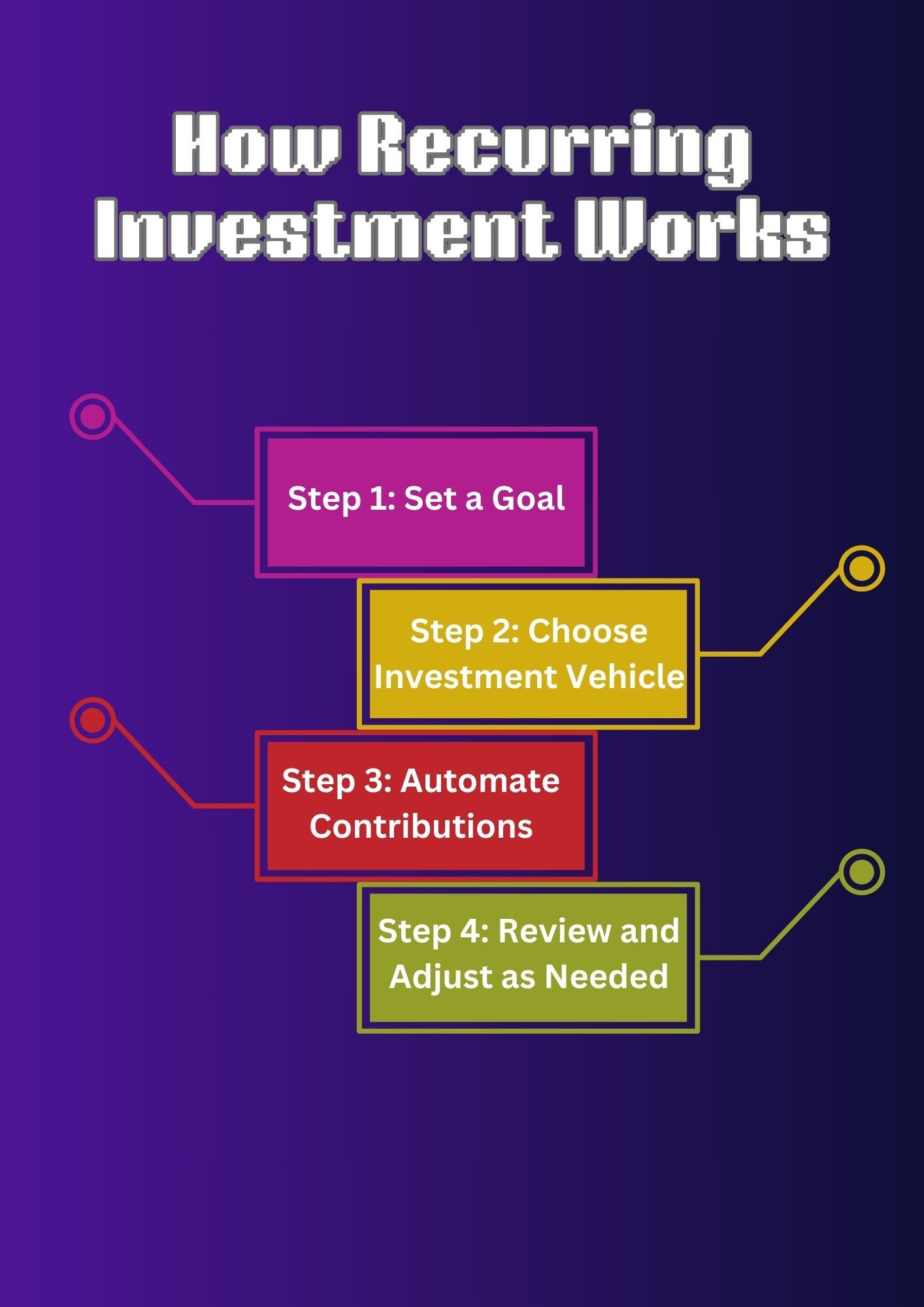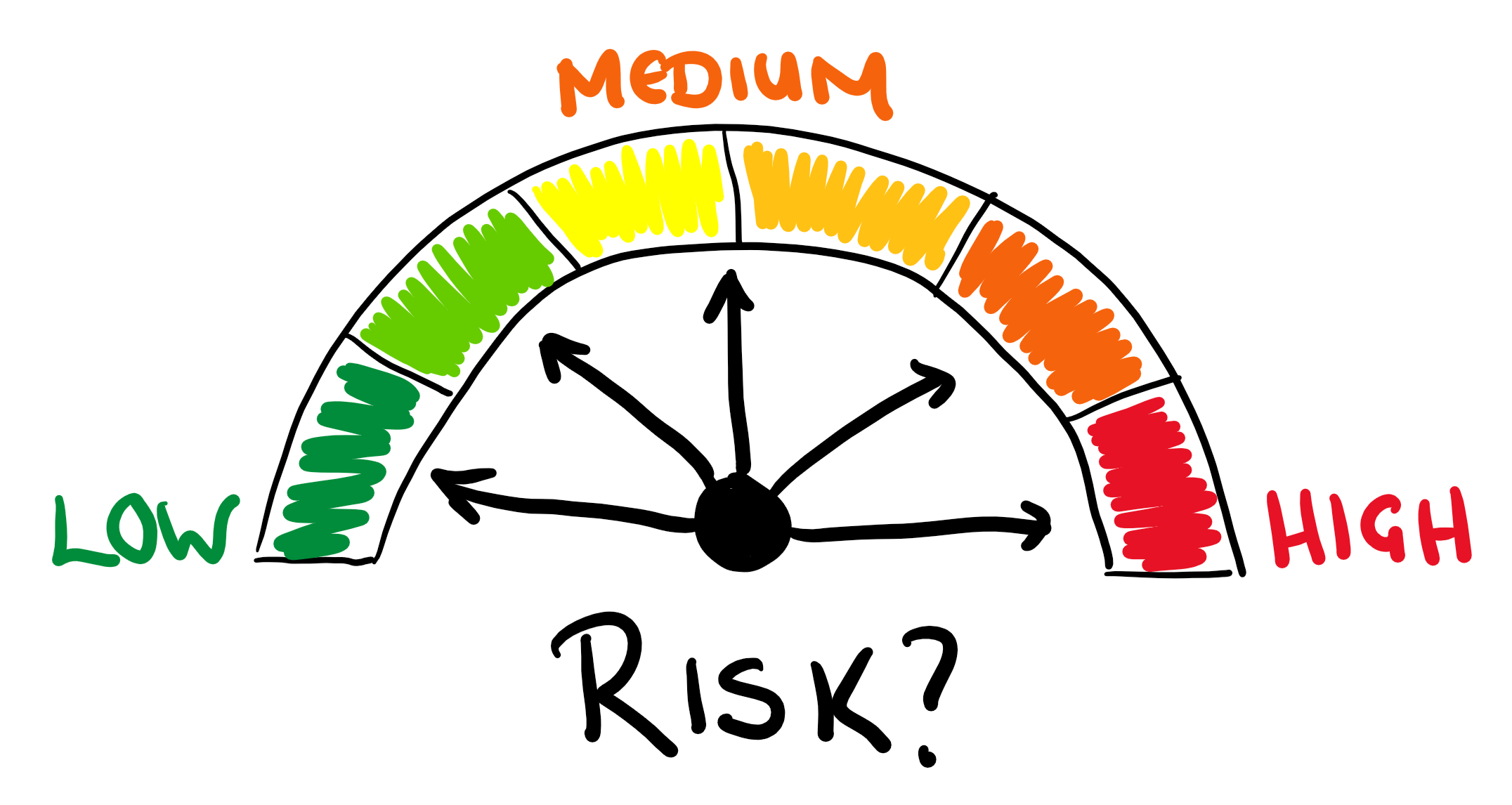In investing, the importance of consistency and discipline cannot be overstated. Among the most effective ways to build wealth over time is through recurring investment. This method allows investors to automate their contributions to a portfolio regularly, ensuring they remain disciplined and committed to their long-term financial goals. Whether you’re saving for retirement, buying a house, or simply looking to grow your wealth, recurring investment can play a pivotal role in your financial success.
This article will explore the concept of recurring investment, its benefits, and how to implement this strategy in your financial plan. We’ll also delve into the different types of recurring investments and provide examples of how they can work in practice.
What is Recurring Investment?
At its core, recurring investment is the practice of contributing a fixed amount of money to an investment account on a regular schedule. These contributions are typically made on a monthly, quarterly, or annual basis. Unlike a one-time, lump-sum investment, recurring investments involve smaller, consistent contributions made over time. The most common forms of recurring investment include:
- Dollar-Cost Averaging (DCA): A strategy where an investor contributes a fixed amount to an investment at regular intervals, regardless of market conditions. Over time, this reduces the impact of short-term volatility and helps to mitigate the risk of investing large sums at the wrong moment.
- Automatic contributions to retirement accounts: Many employer-sponsored retirement plans, like 401(k)s, allow employees to set up automatic deductions from their paycheck that are directed into their investment accounts.
- Recurring investments in mutual funds or ETFs: Investors can set up automated monthly contributions into a variety of funds, ranging from index funds to actively managed mutual funds.
Unlike lump-sum investing, where an individual invests a large amount of money at once, recurring investment spreads out your contributions, creating a steady growth trajectory.
The Benefits of Recurring Investment
Consistency and Discipline
One of the biggest challenges many investors face is the temptation to time the market, trying to buy low and sell high. However, market timing is notoriously difficult, even for seasoned investors. By committing to recurring investments, you take the guesswork out of the equation and stay disciplined in your approach.
Regularly investing a fixed amount of money each month forces you to make investing a habit. It takes emotion and short-term fluctuations out of the equation, ensuring that you’re consistently contributing to your future financial security, no matter what the market is doing in the short term.
Dollar-cost averaging (DCA)

Dollar-cost averaging is a key benefit of recurring investments. With DCA, you’re buying into the market at regular intervals, which means you’ll end up purchasing more shares when prices are low and fewer shares when prices are high. Over time, this smooths out the price volatility of the asset you’re investing in and potentially lowers your average purchase price.
For example, let’s say you’re investing $500 each month in a mutual fund. One month, the price of the fund might be low, so you’ll get more shares for your $500 investment. The next month, the price might be higher, so you’ll receive fewer shares for the same amount of money. Over a long period, this results in a lower average cost per share, potentially leading to higher returns.
Compounding Growth
The power of recurring investment lies in its ability to harness the magic of compounding. When you invest consistently over time, the returns generated on your investment can start to “compound” – that is, your returns generate their returns. The earlier you start investing regularly, the greater the potential for your money to grow exponentially.
For example, if you start investing $500 a month at age 25, your money will have many more years to compound than if you started at 45. This compounding effect becomes even more significant over long periods, making recurring investments especially powerful for long-term goals like retirement.
Financial Flexibility
Another advantage of recurring investment is that it offers flexibility. Since you can start investing with relatively small amounts, it’s an option for people at different stages of their financial lives. Even if you can’t afford to invest large sums upfront, you can begin with as little as $50 or $100 a month and gradually increase your contributions as your financial situation improves.
This flexibility also extends to the type of assets you’re investing in. Recurring investments can be made in stocks, bonds, mutual funds, ETFs, and even alternative assets like real estate crowdfunding. Over time, you can adjust your portfolio as your financial goals evolve.
How Recurring Investment Works

The mechanics of recurring investment are fairly simple. Here’s a step-by-step breakdown:
Step 1: Set a Goal
Before you start investing, it’s essential to set clear financial goals. Are you saving for retirement, a down payment on a house, or building wealth for future generations? Your goals will determine the type of investments you choose and the amount you decide to contribute regularly.
Step 2: Choose Your Investment Vehicle
Once you’ve set your goals, choose the investment vehicles that align with those objectives. Some common options include:
- Stocks and ETFs: If you’re looking for long-term growth, a diversified mix of stocks and ETFs may be appropriate. Many brokers and investment platforms allow you to set up automatic contributions to a variety of low-cost ETFs or index funds.
- Retirement Accounts (IRAs, 401(k)): If you’re investing for retirement, setting up automatic contributions to an IRA or 401(k) can provide tax advantages and long-term growth. Many employer-sponsored retirement plans allow you to designate a specific percentage of your paycheck for automatic investment.
- Robo-Advisors: If you prefer a hands-off approach, robo-advisors can help. These platforms automate portfolio management and rebalance your investments based on your risk tolerance and time horizon.
Step 3: Automate Your Contributions
Most brokerage firms and retirement account providers allow you to set up automatic contributions. Once you’ve decided on your monthly contribution amount, you can link your bank account to your investment account and have a fixed sum transferred automatically each month. This makes it easy to stay on track with your investment strategy and ensures that you’re regularly contributing.
Step 4: Review and Adjust as Needed
Life changes – and so can your financial situation. It’s important to review your investment strategy periodically and adjust your contributions or asset allocation if necessary. For example, if you get a raise at work, you may want to increase your monthly contribution. Or, if your risk tolerance changes, you might adjust the proportion of stocks and bonds in your portfolio.
Common Investment Vehicles for Recurring Contributions
When it comes to recurring investments, there are several asset classes and investment vehicles that can work for different financial goals:
Stocks and ETFs

Stocks and exchange-traded funds (ETFs) are two of the most common investment options for recurring investments. Both can offer significant growth potential, but they come with varying degrees of risk. ETFs, particularly broad-based index funds, offer diversification by investing in a basket of stocks, which can help reduce individual stock risk.
For example, a low-cost index fund tracking the S&P 500 allows you to invest in the 500 largest U.S. companies, giving you exposure to a wide range of sectors. By setting up recurring monthly contributions into an ETF like this, you are spreading your risk while benefiting from the long-term growth of the overall market.
Retirement Accounts (IRAs, 401(k)s)

If your goal is retirement, contributing to a tax-advantaged account like a 401(k) or an IRA is one of the best ways to invest regularly. These accounts often come with employer matching (for 401(k)s) and tax benefits that can significantly increase your long-term returns.
Automatic contributions to your 401(k) or IRA can help you take full advantage of these benefits without having to think about it each month. Plus, many employers allow you to set up automatic payroll deductions, making it even easier to invest consistently.
Robo-Advisors

Robo-advisors have become an increasingly popular option for those seeking an automated investment strategy. These platforms use algorithms to build and manage a diversified portfolio based on your risk tolerance, time horizon, and financial goals.
Once you set up an account and establish your preferences, recurring investments can be automatically deducted and reinvested. Robo-advisors are particularly attractive to beginner investors or those who prefer a hands-off approach.
Real Estate Crowdfunding

For investors interested in diversifying beyond stocks and bonds, real estate crowdfunding offers a unique opportunity. Platforms like Fundrise or RealtyMogul allow you to invest small amounts of money regularly into commercial or residential real estate projects. Over time, this can provide steady income through rental yields and potential capital appreciation.
Key Considerations Before Starting a Recurring Investment
While recurring investment is a powerful tool, it’s important to consider several factors before diving in:
Set Clear Financial Goals
Knowing why you’re investing is the first step in choosing the right recurring investment strategy. Are you saving for retirement, a large purchase, or your children’s education? The clearer your goals, the easier it will be to select the appropriate investment vehicle and determine how much to contribute each month.
Choose the Right Asset Allocation
Your asset allocation – the mix of stocks, bonds, and other investments – should align with your risk tolerance and time horizon. If you’re young and saving for retirement, a portfolio with a higher percentage of stocks may be appropriate. On the other hand, if you’re closer to retirement, you may want to lean more toward bonds or other safer investments.
Understand Fees and Costs
Not all investment vehicles are created equal, and some come with higher fees than others. Mutual funds, for example, can have management fees that eat into your returns over time. Be sure to understand any fees associated with your recurring investment and choose low-cost options when possible.
Emergency Fund and Debt Management
Before committing to recurring investments, ensure that you have a solid financial foundation. This includes building an emergency fund and addressing high-interest debt. Recurring investments should complement your financial plan, not hinder your ability to handle unforeseen expenses.
How to Set Up a Recurring Investment Plan
Setting up a recurring investment plan is relatively simple and can often be done online in just a few steps:
- Choose Your Platform: Research brokers or platforms that offer recurring investment options. Many large brokerage firms, like Vanguard, Fidelity, and Charles Schwab, offer automated investing options. Robo-advisors like Betterment and Wealthfront are also popular for those seeking a hands-off approach.
- Select Your Account Type: Depending on your financial goals, you’ll need to select the appropriate account type (e.g., brokerage account, IRA, 401(k), etc.).
- Automate Contributions: After setting up your account, link your bank account and set up recurring transfers. Many platforms allow you to set a fixed amount to be automatically withdrawn from your bank account and invested in your chosen portfolio.
- Review and Adjust: Periodically check your progress and adjust your contributions or asset allocation based on life changes or market conditions.
Risks and Challenges of Recurring Investment

While recurring investment is generally a low-risk strategy, it’s not without its challenges:
- Market Volatility: The market can be volatile, and there may be times when your investments lose value. However, recurring investment helps mitigate this risk by spreading your investment over time.
- Over-Investing: Be cautious not to contribute more than you can afford, especially if you’re facing immediate financial needs like emergency expenses or paying off high-interest debt.
- Lack of Flexibility: Recurring investments are designed for long-term growth, and withdrawing funds early may result in penalties or missed growth opportunities.
- Inflation: If inflation outpaces your returns, your purchasing power may diminish over time, especially if your investments aren’t well-diversified.
Real-Life Examples and Success Stories
Case Study 1: Young Professional Investing in Index Funds

Sarah, 28, started investing $300 a month into an S&P 500 index fund. By the time she was 38, her consistent contributions and the power of compounding had grown her portfolio to over $100,000, setting her on the path to a comfortable retirement.
Case Study 2: Retiree Building Wealth Through Recurring Dividend Investments

John, 60, set up recurring investments in dividend-paying stocks. This strategy generated enough passive income to supplement his retirement fund, providing both growth and income throughout his retirement years.
Case Study 3: Real Estate Crowdfunding

Mark invested $100 a month into a real estate crowdfunding platform, eventually accumulating enough capital to participate in larger, more lucrative commercial real estate deals, earning consistent returns from rental income and property appreciation.
Conclusion
Recurring investment is one of the simplest and most effective strategies for building wealth over time. By making consistent contributions, you’ll benefit from dollar-cost averaging, compounding returns, and financial discipline. Whether you’re investing for retirement, a major purchase, or general wealth-building, recurring investment allows you to start small, automate the process, and grow your wealth without worrying about market timing.
By choosing the right investment vehicles, staying disciplined, and adjusting your strategy as needed, recurring investment can be a key component of your long-term financial success.
Read more: EXPLORE GREAT WAYS TO DISPLAY NFTS ART

